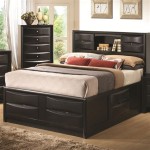Ideal Raised Garden Bed Size
Raised garden beds are an excellent way to grow plants in areas with poor soil or limited space. They offer numerous benefits, including improved drainage, ease of access, and extended growing seasons. However, choosing the ideal size for your raised garden bed is crucial for optimal plant growth and maintenance.
The optimal raised garden bed size depends on various factors, including the type of plants being grown, the available space, and the gardener's preferences. Here are some guidelines to consider when determining the ideal size:
Width
The width of the raised garden bed is important for accessibility. A bed that is too wide may make it difficult to reach the plants in the center. As a general rule, the maximum width should be around 3-4 feet (0.9-1.2 meters). This allows for easy access to plants from both sides without stepping into the bed.
Length
The length of the raised garden bed is less critical than the width. It can be adjusted based on the available space and the number of plants to be grown. However, a length of 6-8 feet (1.8-2.4 meters) is a good starting point for a manageable bed.
Height
The height of the raised garden bed affects drainage, root development, and ease of maintenance. A height of 12-18 inches (30-45 centimeters) is generally recommended. This provides adequate depth for healthy root systems, improves drainage, and reduces back strain when tending to the plants.
Shape
Raised garden beds come in various shapes, including rectangular, square, and L-shaped. The choice of shape depends on the available space and the gardener's preferences. Rectangular beds are the most common and suitable for most plants. Square beds are a good option for smaller areas, while L-shaped beds can be used to create corners and maximize space.
Orientation
The orientation of the raised garden bed is crucial for sun exposure. Most plants require at least 6 hours of sunlight per day. Position the bed in an area that receives ample sunlight throughout the growing season. If possible, orient the bed north to south to maximize sunlight exposure.
Other Considerations
In addition to the size and shape, there are other factors to consider when choosing the ideal raised garden bed:
- Material: Raised garden beds can be made from various materials, such as wood, metal, brick, or recycled plastic. Choose a material that is durable, weather-resistant, and safe for growing plants.
- Drainage: Proper drainage is essential to prevent waterlogging and root rot. Ensure that the raised garden bed has sufficient drainage holes or gaps between the bed materials.
- Accessories: Consider adding accessories such as trellises, hoops, or covers to support climbing plants, extend the growing season, or protect plants from pests and harsh weather.

Raised Bed Garden From A Z What To Know Joe Gardener

A Guide To Building Raised Gardening Beds Fix Com

Everything To Know About Building Raised Garden Beds Lovely Greens

How Big Should My Raised Beds Be Bed Gardening Tips Youtube

Raised Bed Garden From A Z What To Know Joe Gardener

Everything To Know About Building Raised Garden Beds Lovely Greens

How To Build A Raised Bed Garden Topsoil Direct

How To Build A Wood Raised Garden Bed Gate

Raised Bed Garden Design Tips Growing In The

What Is The Ideal Size For A Raised Garden Bed Deep Green Permaculture








